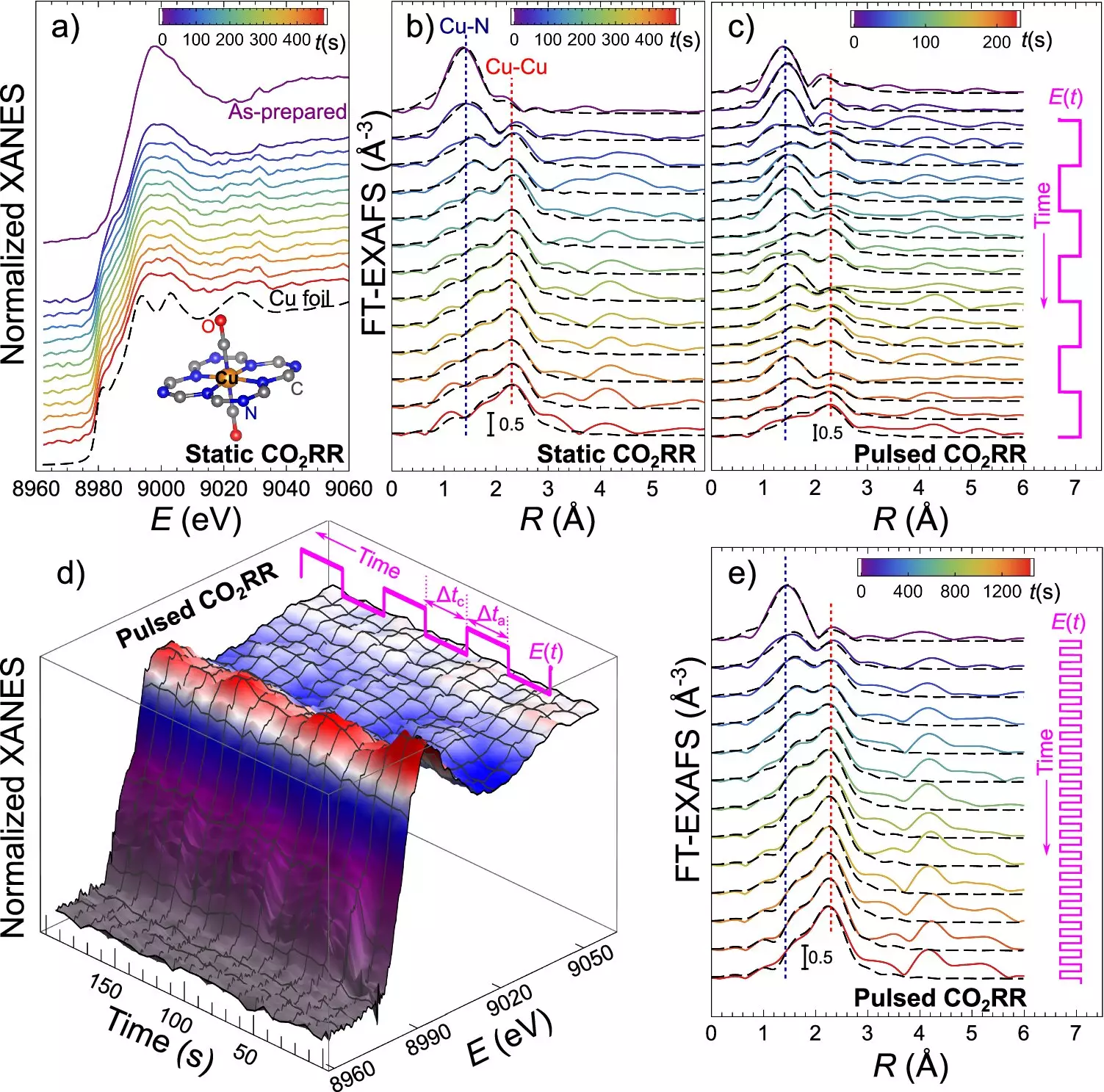In a groundbreaking study published in Nature Communications by researchers at the Fritz Haber Institute, a new advancement in the fight against climate change has been introduced. This study focuses on the mechanisms of carbon dioxide (CO2) re-utilization to produce fuels and chemicals, paving the way for further advancements in catalytic processes driven by renewable electricity.
The core of this discovery lies in the properties of catalysts made up of ultradispersed copper and nitrogen atoms embedded in carbon. These catalysts exhibit the ability to dynamically transition from single atoms of copper to small clusters and metal particles, known as nanoparticles, during the electrocatalytic CO2 reduction (CO2RR) process. This reversible transformation of the catalyst structure allows for precise control over the outcome of the CO2RR process, influencing product selectivity.
One of the significant challenges in scaling up CO2RR technology for practical use has been the broad distribution of reaction products, making it difficult to produce specific chemicals and fuels efficiently. However, this research offers a method to control the distribution of CO2RR products by manipulating the catalyst’s state, providing insight into which structural features of the catalyst are responsible for the production of specific reaction products.
Advanced Techniques for Catalyst Control
The technique developed by the researchers involves alternating electrical pulses to control the catalyst’s structure. By varying the duration of these pulses, the size of the formed nanoparticles can be steered, determining whether the catalyst exists as single atoms, ultrasmall clusters, or larger nanoparticles. Each form of the catalyst is suited for producing different CO2RR products, such as hydrogen, methane, or ethylene.
Real-Time Monitoring of Catalyst Transformation
To monitor and adjust the catalyst’s transformation in real-time, the researchers utilized operando quick X-ray absorption spectroscopy. This advanced technique allows for the observation of structural transformations in the catalyst during the reaction with sub-second time resolution, ensuring optimal conditions for the desired CO2RR products.
This study provides a deeper understanding of catalyst behavior and structural transformations during CO2RR, highlighting the impact of controlling the catalyst’s structure on the process. While the research has implications for technological applications in greenhouse gas reduction and the production of green chemicals and fuels, it also represents a significant advancement in scientific inquiry, laying the groundwork for future developments in the field.


Leave a Reply